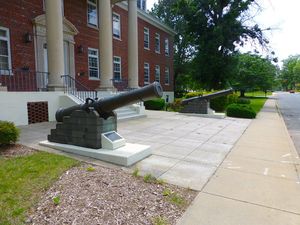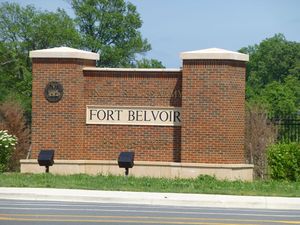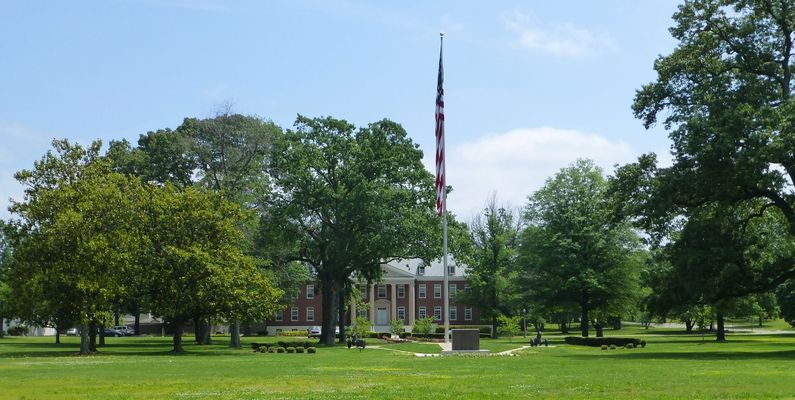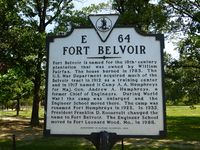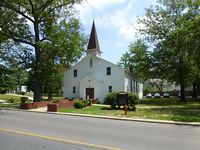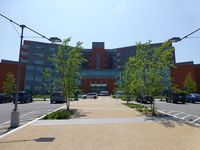Fort Belvoir
|
Fort Belvoir (1917-Present) - First authorized in 1917 as Camp Humphreys and renamed Fort Humphreys in 1922. Named after Major General Andrew A. Humphreys (Cullum 641), distinguished U.S. Civil War veteran and Chief of Engineers (1866-79). Renamed Fort Belvoir in G.O. 1, 14 Feb 1935. Active military installation. HistoryIn 1910 the U.S. Government purchased the 2,500 acre estate of Colonel William Fairfax on the Potomac River. In 1912 the War Department acquired the property for use as a training center and the site became an exercise area for engineers. A temporary Camp Belvoir was established to house the engineers while training on the site.
World War I (1917-1918)The War Department authorized the building of a semi permanent camp on the property 23 Dec 1917 and construction began in January 1918. In May 1918 the post was designated an Engineering Training and Replacement Center (ERTC). The camp was hit hard by the 1918 Influenza epidemic with 4000 troops treated and a mortality rate of 35%. At the end of the war, the post was designated as a demobilization center on 3 Dec 1918 but was also made a permanent installation. Camp Humphreys had trained some 50,000 enlisted engineers and commissioned about 4,900 officer candidates by the end of the war. Camp Humphreys was renamed Fort Humphreys in 1922 and renamed Fort Belvoir in 1935. World War II (1941-1945)File:SM1nuclearpowerplant.JPG Fort Belvoir SM-1 Nuclear Reactor (decommissioned 1973) During World War II Fort Belvoir became a primary training site for U.S. Army Engineers along with Fort Leonard Wood in Missouri and Camp Abbot near Bend, Oregon. The post itself was built out with temporary World War II barracks and quarters for about 24,000 enlisted men and officers. As the war progressed the Fort expanded and additional courses were developed as new weapons were brought into the inventory. By the end of the war in 1945 the Engineer Replacement Training Center (ERTC) at Fort Belvoir had trained some 147,000 engineers. In addition to the training of enlisted engineers some 22,000 officers were commissioned as second lieutenants in the Engineer Officer Candidate School (EOCS). At the end of the war Fort Belvoir became a demobilization center and the ERTC and EOCS programs were discontinued. Both programs were reestablished during the Korean War and the Vietnam War. On 1 Jun 1988 the U.S. Army Engineer School was transferred to Fort Leonard Wood and the Military District of Washington took control of the post. In 1954 the U.S. Army engineers were made responsible for ground based military nuclear reactors and a training reactor, the SM-1, was built near Gunston Cove on the post. The reactor operated from 1957 to 1973 and trained some 800 military nuclear operations personnel. Among the tenants in the period following the war was the United States Military Academy Preparatory School (1957‑1975), transferred first to Fort Monmouth then in 2011 to West Point.
Current StatusFile:Fort Belvoir DLA building.jpg Defense Logistics Agency (DLA) headquarters at Fort Belvoir An active military installation and a part of the U.S. Army Military District of Washington. The post houses a variety of Department of Defense and other tenants including the Fort Belvoir Community Hospital and the Defense Logistics Agency (DLA) headquarters.
Sources:
Links: Visited: 21 May 2013
| ||||||
